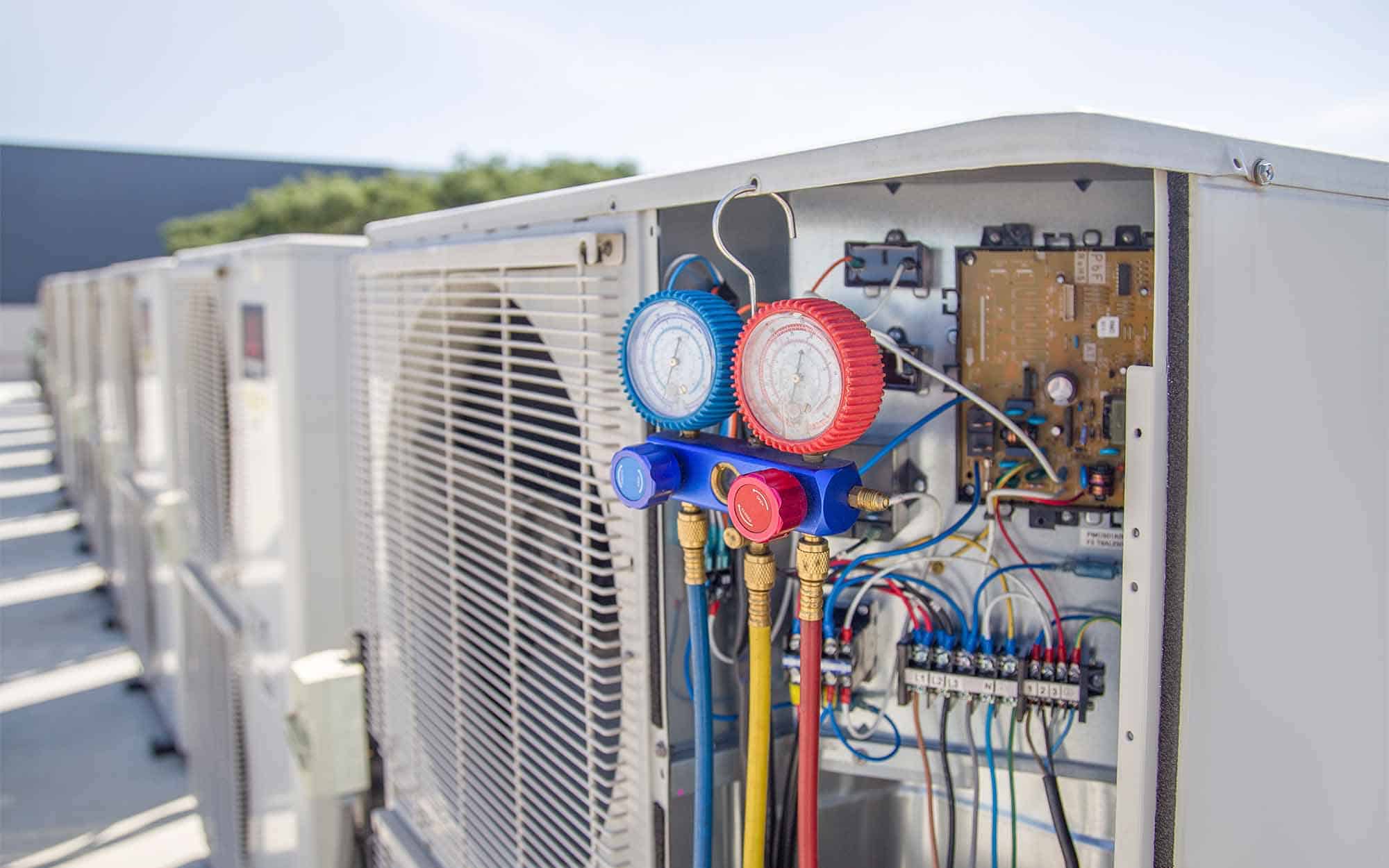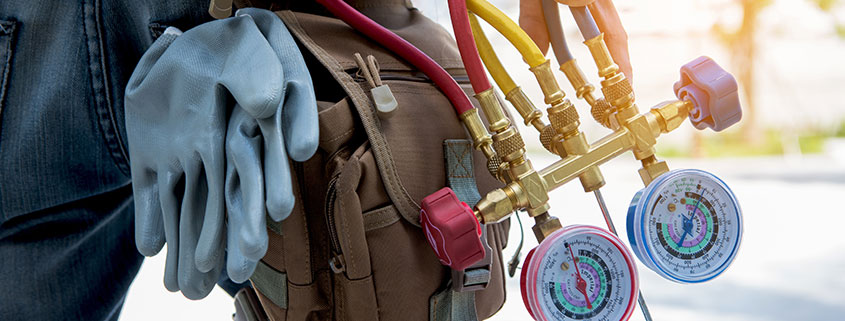Breaking Down the ROI on furnace replacement
Breaking Down the ROI on furnace replacement
Blog Article
How a Heat Pump and Heating System Interact to Maximize Your Home's Home heating Efficiency
Understanding how a heatpump and furnace collaborate is crucial for home owners seeking efficient home heating remedies. Each system has its staminas, providing a well balanced approach to home comfort. The heat pump succeeds in modest temperature levels, while the heater provides quick heat during extreme cold. This synergy not only reduces energy costs however additionally boosts the lifespan of both devices. What aspects affect this partnership, and exactly how can homeowners optimize their advantages?
Understanding Warm Pumps: How They Function
Although lots of people may be strange with their inner operations, heatpump play an essential duty in modern-day heating unit. These devices run by transferring warm from one area to another, making use of the principles of thermodynamics. In chillier months, a heatpump extracts warm from the outdoors air, ground, or water, and transfers it inside to warm the living area. Conversely, during warmer months, it can reverse the process, acting as an air conditioner by getting rid of warmth from inside to the outside.Heat pumps consist of an evaporator, condenser, compressor, and development valve. The refrigerant within the system absorbs warm as it vaporizes at reduced temperature levels and pressures. The compressor after that raises the stress and temperature level of the cooling agent, permitting it to release warmth as it condenses. This effective process can significantly minimize energy usage compared to standard heating methods, making heatpump a lasting selection for climate control in homes.
The Function of Heating Systems in Home Heating
Heating systems play an important duty in home heating by providing a trustworthy resource of warmth throughout the cooler months. They operate by generating warm through combustion or electrical resistance, dispersing it throughout the home using air ducts or radiant systems. The efficiency of a furnace is commonly measured by its Yearly Fuel Usage Effectiveness (AFUE) rating, which indicates exactly how effectively the unit converts fuel into heat.Furnaces can use various power sources, including gas, lp, electricity, or oil, permitting house owners to choose one of the most appropriate choice for their needs. Unlike warmth pumps, which may have a hard time in extreme chilly, heating systems maintain regular performance, making certain that interior temperatures stay comfortable no matter exterior problems. Furthermore, contemporary heating systems commonly come furnished with sophisticated modern technology, such as clever thermostats and variable-speed blowers, enhancing their performance and responsiveness. This convenience makes heaters an essential component in all-inclusive home heating methods.

Benefits of Utilizing Both Equipments With Each Other
Integrating the strengths of both heaters and warm pumps can result in a more effective and efficient home heating service. Utilizing both systems enables home owners to capitalize on the heatpump's energy performance during milder temperature levels while relying upon the heating system for even more severe cold conditions. This twin technique can considerably decrease energy prices, as warmth pumps eat less electrical power than conventional heating techniques when temperature levels are moderate.Additionally, using both systems with each other can enhance convenience levels in the home. Warmth pumps can give constant, even home heating, while furnaces can promptly increase ambient temperature levels when needed. The combination of both systems can expand the lifespan of tools by decreasing wear and tear on each unit, as they share the work. Inevitably, property owners can appreciate a balanced, cost-efficient heating option that readjusts flawlessly to varying weather condition problems, ensuring a warm and welcoming home throughout the cold weather.
Just How Warmth Pumps and Furnaces Complement Each Various Other
They develop a complementary heating system that makes best use of effectiveness and convenience when house owners incorporate warmth pumps and furnaces. Warmth pumps operate by transferring heat from the outside air or ground, making them very reliable in modest environments. They stand out during milder temperatures, supplying cost-effective heating. On the other hand, heating systems produce heat with combustion or electric resistance, delivering solid, prompt warmth throughout extreme cold conditions.The mix of these 2 systems enables dynamic adjustments based on temperature level changes. During warmer months or milder wintertime days, the heat pump can take the lead, conserving power and lowering prices. As temperatures decline, the heater can seamlessly engage, ensuring regular heat throughout the home. This harmony not only enhances energy use however likewise enhances the lifespan of both systems, as each device runs within its perfect efficiency range. With each other, they produce a balanced setting that adapts to differing climate demands.
Optimizing Performance: Tips for Homeowners
Property owners can enhance their home heating performance with a number of functional approaches. Establishing a routine upkeep routine, incorporating clever thermostat innovation, and applying effective insulation and sealing remedies are key steps. These actions not only improve convenience but likewise decrease energy prices.
Regular Maintenance Set Up
To guarantee maximum heating performance, establishing a routine maintenance routine is essential for any home. Home owners must focus on routine evaluations of both heatpump and heating systems continue reading this to identify peak performance. This includes changing air filters each to 3 months, as blocked filters can significantly minimize effectiveness. Additionally, scheduling specialist maintenance at the very least annually enables technicians to recognize and address prospective problems prior to they escalate. Property owners must additionally clean the heatpump's exterior unit to protect against particles accumulation that can impede air flow. By sticking to a routine upkeep timetable, house owners not only boost their heater' effectiveness but also prolong their life-span, causing higher comfort and decreased power expenses throughout the chillier months.
Smart Thermostat Integration
Incorporating a wise thermostat into a home heating unit can considerably enhance power performance, specifically as it permits accurate control over temperature setups. These gadgets can find out the property owner's timetable and choices, automatically adjusting the temperature level to enhance comfort while minimizing energy usage. As an example, they can reduce home heating throughout times when the home is vacant, reducing unneeded consumption. Several wise thermostats likewise give real-time power usage information, enabling house owners to make educated decisions regarding their home heating behaviors. Furthermore, remote access using mobile phone applications allows customers to change setups from anywhere, making certain the home is cozy upon return. In general, clever thermostat combination not just boosts comfort yet significantly adds to power financial savings and performance.
Insulation and Sealing Solutions
Smart thermostats play a crucial function in energy performance, yet their efficiency can be considerably boosted by proper insulation and securing services. Home owners should focus on insulating attics, floors, and wall surfaces to minimize warm loss. Top quality insulation products, such as spray foam or fiberglass, can greatly enhance thermal resistance. Furthermore, securing gaps around home windows, doors, and air ducts protects against cold air infiltration and warm retreat. Weatherstripping and caulking are reliable approaches for resolving these leaks - heat pump installation ooltewah tn. Regular inspections for air leaks, along with the use of blower door tests, can help identify problem areas. By investing in insulation and securing, homeowners can optimize the performance of their furnace, eventually causing lowered power intake and reduced energy expenses
Usual Misconceptions Concerning Warm Pumps and Furnaces
What false impressions surround warm pumps and furnaces? Many people erroneously think that warmth pumps are inefficient in chillier climates. In truth, contemporary heatpump are designed to run efficiently even in reduced temperature levels, offering reputable home heating throughout winter season. Another usual misconception is that heating systems are always a lot more efficient than warmth pumps. This depends on the specific power sources and efficiency scores of the devices in inquiry. Some may also believe that using both systems simultaneously is unnecessary, however in truth, this mix can optimize heating effectiveness, especially throughout severe weather condition problems. Furthermore, people usually presume that warm pumps require continuous upkeep, when truthfully, they have similar upkeep needs to standard heating systems. By disproving these myths, house owners can make even more informed choices concerning their home heating options, inevitably leading to improved convenience and energy effectiveness in their homes.
Upkeep Considerations for Combined Equipments

Regularly Asked Inquiries
Can Warm Pumps Job Efficiently in Exceptionally Cold Climates?
Heat pumps can battle in incredibly cool climates because of lowered performance and heat extraction limitations. Developments in modern technology have actually led to versions developed for much better efficiency in such problems, boosting their viability in rough environments.
How Much Time Do Warm Pumps and Furnaces Normally Last?
Heat pumps typically last 15 to 20 years, while heaters have a life-span of 15 to 30 years. Routine upkeep can expand their long life, ensuring efficient operation and decreasing the demand for early substitutes.

What Is the Average Price of Installing Both Systems?
The typical cost of setting up both a heat pump and a furnace generally ranges between $5,000 to $10,000 - heat pump installation ooltewah tn. Aspects influencing this expense consist of system dimension, installation intricacy, and regional labor rates
Exist Tax Rewards for Utilizing Energy-Efficient Heating Solutions?
Several property owners ask about tax rewards for energy-efficient heater. Numerous government and state programs commonly offer credits or refunds, motivating the fostering of sustainable modern technologies to minimize energy usage and advertise ecological duty.
Just how Do I Select the Right Dimension Warmth Pump and Furnace?
Picking the ideal dimension warmth pump and heater entails computing the home's square footage, thinking about insulation high quality, and examining neighborhood environment. Consulting a specialist can guarantee excellent system performance and power effectiveness based upon particular demands. heat pump installation ooltewah tn. Comprehending just how a warm pump and heater work with each other is crucial for home owners seeking reliable heating options. In cooler months, a warmth pump extracts warm from the outdoors air, ground, or water, and transfers it indoors to warm the living area. When homeowners incorporate warmth pumps and heating systems, they create a corresponding home heating system that optimizes performance and convenience. Warmth pumps run by transferring warm from the outdoors air or ground, making them extremely effective in modest climates. Warm pumps can struggle in exceptionally chilly environments due to reduced efficiency and warm removal limitations
Report this page